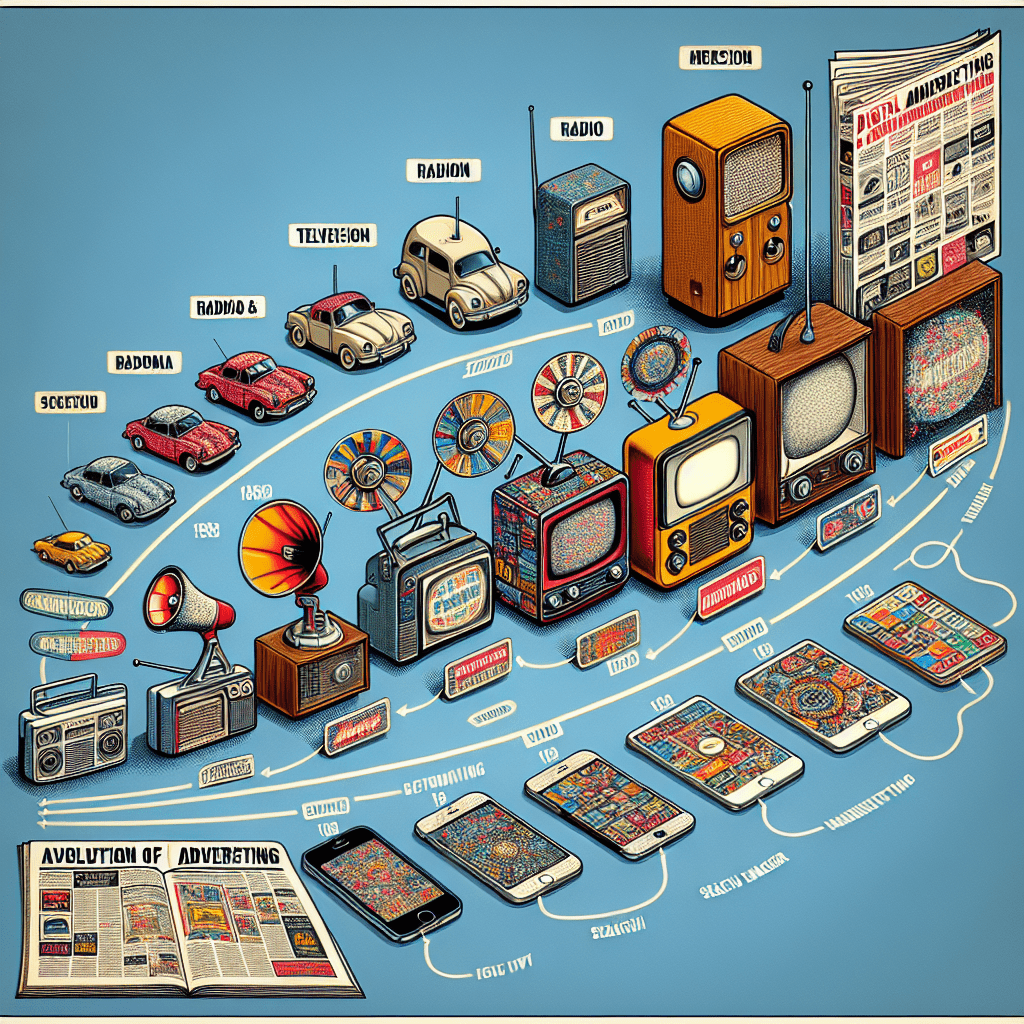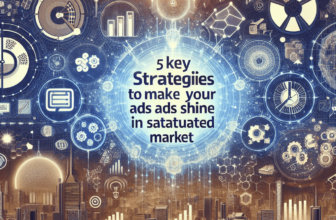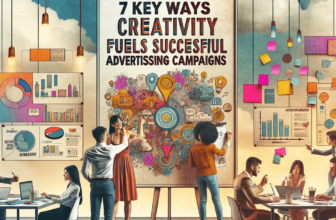
[ad_1]
The Evolution of Advertising: Tracing the Path from Print to Digital
Advertising has evolved remarkably over the centuries, from the early days of town criers and outdoor signs, to the advent of print media, and now, the dawn of digital platforms. Every period of advertising evolution has delivered game-changing moments, indicating the dynamic nature of this vital industry.
EARLY STAGES OF ADVERTISING
Advertising is as old as civilization itself, with roots dating back to ancient Egyptian papyrus. However, the more significant part of advertising evolution started in the 15th century when the printing press was invented. The ability to produce prints in mass scale allowed for distribution of promotional materials like posters and leaflets, propelling advertising from a localized function to reach regional, and later, national audiences.
In the 17th century, the first printed news publication, labelled a ‘newspaper’, heralded a new pathway for advertising. The commercial benefit of print as a promotional tool began to gain attention. Advertisements in these newspapers were primarily typographic and followed a straightforward, informative style, telling readers what was for sale.
BROADCAST MEDIA AND ADVERTISING
The invention of broadcast media, i.e., radio and television, marked another essential milestone in advertising history. Radio became a medium of mass communication in the 1920s, providing a new, auditory platform for advertisements. This allowed marketers to tap into the household through a whole new medium, fostering more personal relationships with consumers.
Television arrived in the 1950s, reshaping advertising yet again. As a visual and auditory medium, it offered an immersive promotional platform. Advertisers swiftly realized the potential of television commercials in storytelling, now using sight, sound, and motion to appeal to the audience. This laid the foundation for emotional appeal in advertising.
EVOLUTION INTO DIGITAL ADVERTISING
The conception of the Internet in the early 1990s once again revolutionized advertising. Initially, websites were cluttered with banner ads, drawing similarities to print advertising. However, they were largely ineffective due to ‘banner blindness’ – a phenomenon where website visitors consciously or subconsciously ignore banner-like information.
The dotcom bubble in the late 1990s led to search engines’ rise, opening new avenues for advertising. With the introduction of Google AdWords (now Google Ads) in 2000, businesses could advertise to their target audience using specific keywords. This marked the dominance of ‘search advertising,’ providing businesses a way to precisely reach their audience based on what they were actively searching for online.
Arrival of social media platforms like Facebook and Instagram ushered in ‘social media advertising,’ another significant shift. These platforms collected user data, allowing advertisers to use this information for targeted advertising, further enhancing precision.
TRANSITION TO PROGRAMMATIC ADVERTISING
The sheer volume of web traffic and the ever-growing complexity of the digital advertising landscape led to the innovation of programmatic advertising. This involves using artificial intelligence (AI) algorithms to automate the buying and selling of online ad space.
Programmatic advertising aligns with the broader culture of personalization that has grown with the internet, allowing advertisers to target ads not just to groups, but to individual Internet users. They can now leverage data analysis of browsing habits, interests, and demographic details to tailor their ads in real time.
IMPACT OF ADVERTISING EVOLUTION
The advertising evolution from print to digital reflects society’s technological advancement and changing communication patterns. It also reflects shifts in consumer expectations. Today’s consumers demand personalization, authenticity, and seamless experience across various platforms. On the business side, these changes offer increased opportunity for precision targeting, metrics-driven strategies, and interactive engagement with audiences.
The evolution of advertising parallels the changing nature of human interaction. Advertising in the digital era is more of a two-way dialogue, where consumers can engage with brands, share feedback, and influence brands’ decisions. This concept would have been alien in the earlier days of print media, marking a significant shift in the advertiser-consumer relationship.
The transition from print to digital advertising is a testament to the dynamic nature of the industry and society as a whole. As new technologies like virtual and augmented reality, IoT, and blockchain rise, the advertising industry is set to evolve further, molding its strategies to the preferences of the 21st-century consumer. Each step in the journey provides a rich lesson about society’s values, technological capabilities, and communication methods during each period.
And while we can’t predict exactly where advertising will take us, one thing is clear – it’s a journey that’s nowhere near its end.
[ad_2]







